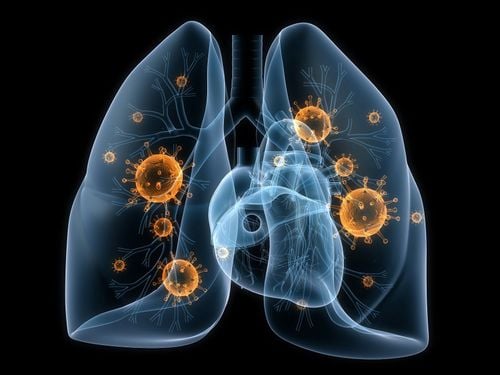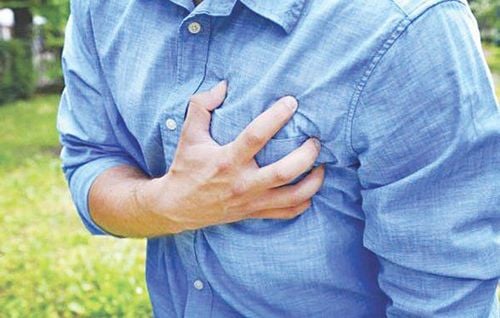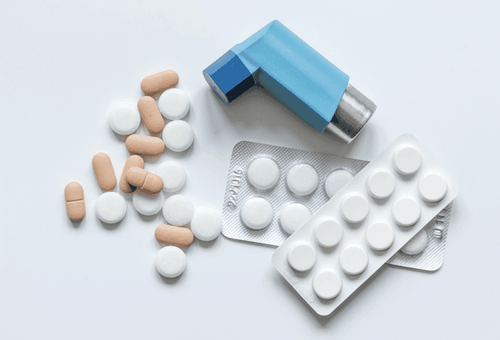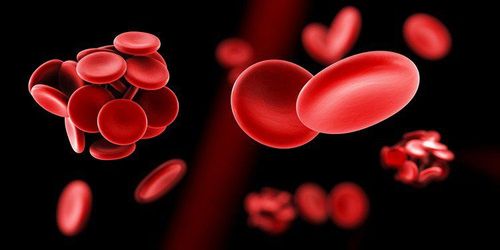This is an automatically translated article.
Pulmonary embolism is a common disease with a mortality rate of about 30% if not detected and treated early. There are many causes of the disease, of which the most common cause is deep vein thrombosis of the lower extremities.1. What is pulmonary embolism?
A pulmonary embolism (pulmonary embolism) is a serious, potentially life-threatening condition that occurs due to a blockage of a blood vessel (artery) in the lungs. Pulmonary embolism can occur in the central pulmonary artery or near the edge of the lung. Pulmonary embolism causes symptoms such as chest pain and shortness of breath, but it can also have no symptoms at all, making it difficult to detect.2. Causes of pulmonary embolism
2.1 Due to venous thrombosis Veins are a system of blood vessels that return blood to the heart after feeding the whole body. Thrombosis is a blood clot. An embolism occurs when a blood clot (thrombus) separates from where it formed and travels through the bloodstream until it becomes lodged in a narrower blood vessel elsewhere in the body.With cases of pulmonary embolism, deep vein thrombosis is the most common cause. Most pulmonary embolisms form in a vein in the leg. In addition, pulmonary embolism can arise from thrombosis of the veins of the pelvis, kidney, upper extremities, or from the right heart. Thrombosis often forms at sites of slow blood flow, such as venous valves or venous confluence. Blood clots causing pulmonary embolism can be large or small, small or large in number.
When the thrombus is in the pulmonary artery, it blocks blood flow to the lungs to receive oxygen. Without enough blood to receive oxygen and move it around the body, oxygen levels in the body drop, which can cause stress and damage to organs, including the brain, kidneys, and heart. The severity of the disease depends on the blood flow not reaching the lungs. In addition, pulmonary embolism also makes the left heart unable to pump blood, leading to low blood pressure. All of these effects can be fatal in a short time if left untreated.
2.2 Other causes A small number of cases of pulmonary embolism are not due to thrombosis but come from other causes such as:
Fat embolism: Drops of fat from the marrow of the broken bone (if the broken bone is a large bone and as long as the femur); Foreign body: Common in interventional procedures causing catheter breakage, coil drop or foreign bodies from unclean syringes such as drug injection syringes; Cancer: A small piece of tumor has broken off from a large tumor in the body; Large air bubbles in the veins (rare); Amniotic fluid in pregnancy or during delivery - amniotic fluid embolism (rare); Sepsis .
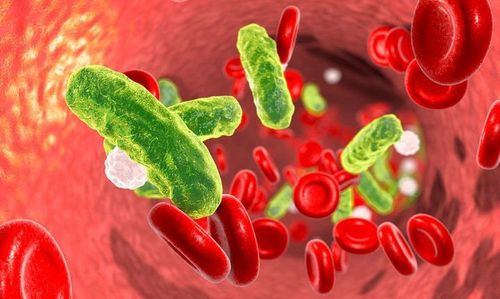
Nhiễm trùng huyết cũng có thể là nguyên nhân dẫn tới thuyên tắc mạch phổi
3. Factors that increase the risk of pulmonary embolism
3.1 Genetic factors Antithrombin III deficiency; Factor V Leiden (resistance to activated protein C); Prothrombin gene defect; Protein C deficiency; Protein S deficiency; Dysfibrinogenemia; Plasminogen disorders; Increased blood homocysteine. 3.2 Acquired factors Over 40 years old; History of major surgery, especially gynecological surgery or surgery of the pelvis and legs; History of venous thromboembolism; Trauma, traumatic brain injury; Hip fracture; Immobility, paralysis; Varicose veins; Varicose veins of the lower extremities; Congestive heart failure; Heart attack ; Fat; Pregnant or within 6 weeks postpartum; Using birth control pills: Oral contraceptives or hormone pills; Smoking habits; Having a malignancy; Severe thrombocytopenia; Paroxysmal nocturnal hemoglobinuria; Traveling long distances by car or plane without stopping being physically active; People who do not use blood thinners prescribed by a doctor; Have antiphospholipid antibody syndrome, including systemic lupus erythematosus. People with multiple risk factors are more likely to have blood clots in the body and are more likely to face the risk of pulmonary embolism.
Béo phì là một trong nhiều yếu tố nguy cơ khiến bạn dễ mắc phải thuyên mắc mạch phổi
4. How to prevent pulmonary embolism?
Because the main cause of pulmonary embolism is deep vein thrombosis, it is necessary to first prevent the risk of deep vein thrombosis by:4.1 Before and after surgery The doctor appoints the patient to take medicine prevent the formation of blood clots before or after surgery; Hospital inpatients can wear special elastic socks or inflatable shoes to help contract muscles and stimulate blood circulation; Patients need to get up, practice walking immediately after the procedure to prevent blood clots; The patient's feet or the bed can be raised. 4.2 During pregnancy Doctors prescribe drugs or other treatments to prevent DVT if there are risk factors such as:
Family history of DVT; Having inherited syndrome of hypercoagulability; Need bed rest; There is a possibility of cesarean section. 4.3 When having a long trip When having a long trip, women who are pregnant or at risk of deep vein thrombosis should pay attention to the following instructions:
Drink plenty of water; Wear loose clothing; Walk and stretch often; Talk to your doctor about using compression stockings to prevent blood clots (some people with circulation problems or diabetes should not wear them). Pulmonary embolism mainly occurs due to deep vein thrombosis of the lower extremities. To be able to effectively prevent pulmonary embolism, patients need to pay attention to the measures to prevent deep vein thrombosis mentioned above. In particular, when there are signs of pulmonary embolism such as chest pain, shortness of breath, etc., the patient should immediately go to the doctor for an accurate examination and diagnosis and timely and effective treatment measures.

Khi có dấu hiệu tắc mạch phổi như đau ngực, khó thở,... bệnh nhân cần ngay lập tức đi khám để được kiểm tra, chẩn đoán
Please dial HOTLINE for more information or register for an appointment HERE. Download MyVinmec app to make appointments faster and to manage your bookings easily.




